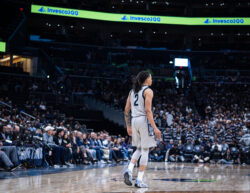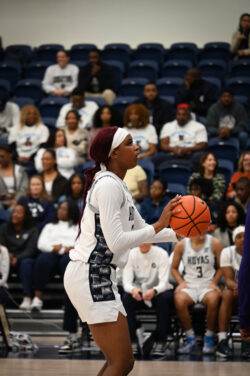Contact with Georgetown’s various athletes is an inevitable occurrence. There is seldom a day when one can’t hear or see the football team practicing on Harbin Field or watch one or two members of the basketball team duck under the door at Leo’s. It seems unlikely, then, that any student could overlook a Hoya team, especially not a powerhouse with a national title and a slew of All-Americans. But such is the case with the Georgetown University Sailing Team.
Despite their relative anonymity, the team has a far more impressive resume in the last decade then any other athletic group on campus. Voted National Team of the Year in 2006 and boasting an astounding five All-Americans on the 2007 squad alone, it’s a wonder why Hoya fanatics don’t trade in their basketball season tickets for a pair of shades and a life-vest.
But sailing, unlike basketball, baseball and other traditional sports, isn’t exactly a hobby that the average person has the means to enjoy. The sailing world is a parallel culture in the world of sports, and the greatest sailors tend to be longtime aficionados.

“People really are generally lifelong sailors,” Head Coach Mike Callahan said. “They tend to know they are going to sail well before they get on campus.”
Callahan is a lifelong Hoya sailor. After graduating from the College in 1997, Callahan, a former captain of the team, became an assistant coach. He took the head-coaching job the following year and received the Outstanding Coaching Achievement Award in his second season.
Callahan’s team will miss the services of an exceptional graduating class, including J.B. Turney and Caroline LaMotte, All-Americans from last year’s co-ed squad, which finished the year ranked 8th nationally.
“I suppose it hurts a team to graduate a large senior class,” Blaire Herron (COL `08) said. “But there are other strong teams in college sailing who face the same issue.”
Herron, who was named All-American after last season, is one of the returning standouts that will anchor this year’s team. Another key returnee is Chris Behm, a senior who was voted All-American in two of his first three seasons on the team. Herron and Behm will have big shoes to fill, but Callahan has brought the second best recruiting class in the country to the Hilltop to help the cause.
“I think if our freshmen are as good as we think they are, there is every hope for a National Championship,” he said.
The two most highly touted recruits from this class are Evan Aras (SFS ‘11) and Charlie Buckingham (COL ‘11) of Annapolis, Md. and Newport Beach Calif. respectively, two hotbeds of sailing talent.
In addition to expressing his excitement about the upcoming season and his new teammates, Aras addressed perceptions of sailing as the sport of the privileged and the relative ignorance about the team on campus.
“Sailing’s roots as a recreational sport are heavily linked to the elite and super rich and that has diminished it’s perceived accessibility to the public,” he said.
The team’s home base is the Washington Sailing Marina in Northern Virginia, about a 20-minute drive from campus. Weight-training regimens and pre-practice warm-ups are as important to the sailors as they are to any other athletes, but they also have to hit the water.
“We keep the boats on a plot of grass in the Marina, once we rig up we sail for a couple hours,” Herron said. “Sometimes we practice starts and other maneuvers, but Thursday is ‘race day.’ Mike [Callahan] and [assistant coach] Alana [O’Reilly] keep score and everyone takes it very seriously.”
The team must take everything seriously if they hope to compete with other sailing heavyweights, some of which are in their own back yard.
“There’s no traditional rival,” Callahan said of the competition. “But there are tons of good teams around here like St Mary’s (Maryland), Navy and Hobart William-Smith.”
The Georgetown squad hopes to stand out not just with a talented group of new recruits, but with a shiny fleet of new boats as well.
“We unloaded two semi-trucks full of beautiful boats yesterday,” Herron said.
There are few people on campus who aren’t aware of what Roy Hibbert can do in the paint with a seven-foot frame. But with new boats, new recruits, and a winning tradition, it’d be a shame not to pay a little more attention to what Georgetown sailors can do in the water with a 14-foot-frame boat and a little elbow grease.




